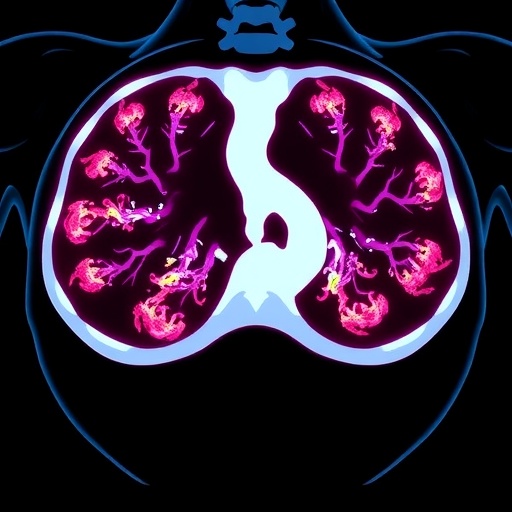
Endometrial cancer (EC) continues to pose a growing public health challenge worldwide, marked by a persistent rise in incidence despite advances in diagnostic technologies. As the sixth most prevalent malignancy affecting women, its increasing burden calls for intensified efforts to decode the complex interaction between modifiable lifestyle factors and genetic predispositions. Recent comprehensive reviews highlight that while obesity remains the dominant driver behind around 60% of preventable EC cases, subtle yet actionable influences stemming from diet and broader lifestyle habits are emerging as essential focal points for prevention strategies. Understanding and integrating these elements into personalized frameworks are imperative for curbing this escalating trend.
Over the past decade, the incidence of EC has demonstrated an annual growth rate of approximately 1.5%, with notable surges in premenopausal populations within affluent societies. This shift underscores a critical epidemiological transition where metabolic health disturbances take center stage. Obesity’s mechanistic contribution, intertwined with insulin resistance, chronic inflammation, and hormonal dysregulation, provides a biologically plausible pathway linking excess adiposity to endometrial carcinogenesis. Given these relationships, dietary patterns and physical activity regimes that modulate metabolic risk present promising avenues for EC risk attenuation. However, variations in individual genetic backgrounds, metabolic phenotypes, and cultural contexts complicate the uniform application of preventive recommendations.
Among dietary interventions, the Mediterranean diet gains attention for its robust association with reduced EC risk. Characterized by abundant consumption of fruits, vegetables, whole grains, legumes, and healthy fats such as olive oil, this dietary pattern exerts anti-inflammatory and antioxidant effects pivotal for mitigating carcinogenic processes. Epidemiological data suggest an approximate 13% risk reduction linked to adherence, yet this benefit is not universal. Factors including body mass index (BMI), ethnic background, and socioeconomic status modulate diet efficacy, highlighting the necessity for contextual tailoring. Contrasting this, the ketogenic diet shows potential through improvements in insulin sensitivity but raises concerns related to nutritional imbalances and organ-specific toxicities, warranting cautious consideration.
.adsslot_uQWmPKadEX{width:728px !important;height:90px !important;}
@media(max-width:1199px){ .adsslot_uQWmPKadEX{width:468px !important;height:60px !important;}
}
@media(max-width:767px){ .adsslot_uQWmPKadEX{width:320px !important;height:50px !important;}
}
ADVERTISEMENT
The Diabetes Risk Reduction Diet (DRRD), emphasizing high fiber and low sugar intake, also emerges as beneficial in lowering EC risk, particularly by impacting glycemic control and metabolic health. Nevertheless, effectiveness diminishes in older, obese, or ethnically diverse populations, underscoring unmet needs for demographic-specific guidelines. Beyond these patterns, soy isoflavones illustrate the intricate interplay between bioactive compounds and hormonal milieu. Protective effects in Asian populations with habitual high intake contrast with potential adverse consequences in hormone-sensitive individuals and cancer survivors, reflecting the complex endocrinological pathways involved and the necessity of personalized risk assessments.
Physical activity stands out as a critical lifestyle determinant capable of modifying EC risk via improved insulin sensitivity, reduced systemic inflammation, and favorable hormonal profiles. Engagement in moderate exercise, quantified as 7.5 to 15 metabolic equivalent task (MET)-hours per week, is correlated with significant risk reductions. This protective effect is counterbalanced by sedentary behavior, which conveys elevated risk by nearly 30%. Intriguingly, smoking exhibits a paradoxical inverse association with EC, likely due to anti-estrogenic effects; nevertheless, the substantial overall mortality risks negate any clinical encouragement of tobacco use.
Alcohol consumption presents a nuanced risk profile. Low to moderate intake may confer marginal risk reduction in obese or insulin-resistant women, potentially related to modulation of metabolic pathways and adiposity. However, higher alcohol consumption shows no definitive protective or harmful effects on EC risk, suggesting that dose and individual metabolic context critically influence outcomes. Psychological stress, manifesting through depression and anxiety, correlates with poorer EC prognoses. The underlying mechanisms revolve around immune-endocrine disruptions that may potentiate tumor progression, thus underscoring the importance of holistic patient care encompassing mental health.
Distinct differences characterize hereditary EC associated with Lynch Syndrome (LS) versus sporadic cases. LS patients typically present at younger ages with lower BMI, and lifestyle modifications yield limited benefits in this subgroup. Recent evidence supports aspirin prophylaxis at doses around 600 mg daily, substantially reducing EC risk, notably among MLH1 mutation carriers after prolonged administration exceeding two years. Hormonal contraceptives, including oral formulations and levonorgestrel-releasing intrauterine systems (LNG-IUS), exhibit protective effects in general populations, yet their utilization in LS and obese individuals requires careful balancing against potential thromboembolic risks and alterations in the cervical-endometrial microbiota, such as increased Prevotella abundance.
Debates continue regarding reductionist versus holistic approaches to nutrient-focused cancer prevention. Reductionist strategies emphasize isolated nutrient effects, although findings remain inconsistent. For instance, omega-3 polyunsaturated fatty acids display conflicting associations with EC risk—some studies report risk reductions of up to 23%, whereas others indicate potential increases related to specific forms such as docosahexaenoic acid (DHA). Similarly, selenium and vitamin C demonstrate context-dependent anti- or pro-tumorigenic behavior influenced by dosages and biological environment. Conversely, holistic approaches prioritize dietary patterns, asserting that synergistic combinations found in Mediterranean and plant-based diets eclipse the benefits of isolated nutrient supplementation. Present consensus advocates a hybridized strategy that integrates whole-diet adherence with targeted nutrient optimization.
A notable paradox, termed the “dose-effect,” emerges in lifestyle interventions. Low-intensity activities, such as regular walking, often surpass high-intensity exercise regimens in reducing EC risk, mainly due to superior adherence and sustained metabolic benefits. However, obese women may necessitate higher exercise volumes—exceeding 15 MET-hours per week—to achieve meaningful risk mitigation. The reliance on self-reported activity data introduces bias, with emerging evidence favoring wearable technology for accurate behavioral monitoring, enabling refined intervention calibration and compliance assessment.
Progressing toward personalized prevention demands stratification by metabolic phenotypes and genetic risk profiles. Focusing on insulin resistance and inflammatory markers has unveiled that certain subgroups, such as overweight individuals, may derive amplified benefits from omega-3 supplementation and lifestyle modifications. LS patients require bespoke strategies—for example, prioritizing pharmacologic prophylaxis over hormonal contraceptives due to inherent risk variations. Implementation challenges include limited multi-omics datasets that integrate genomics, metabolomics, and lifestyle variables, alongside a deficit of validated biomarkers (e.g., inflammatory cytokines like interleukin-6) that hinder precise risk prediction and intervention targeting.
Clinical integration of these insights necessitates multidisciplinary approaches encompassing oncologists, dietitians, and behavioral specialists, supported by digital health platforms. These tools facilitate culturally sensitive, accessible lifestyle interventions that can be sustained longitudinally. Moreover, public health policies must prioritize education campaigns and foster intersectoral collaborations to address sociocultural determinants impacting adherence and acceptance.
Despite advances, crucial evidence gaps persist, including methodological heterogeneity among studies, confounding by BMI and other metabolic factors, reliance on self-reported data, and insufficient representation of diverse racial, age, and genetic cohorts. Future priorities encompass establishing large-scale, integrative cohorts capable of decoding complex gene-environment interactions, developing culturally adapted intervention models augmented by digital health frameworks, and securing policy commitments to support sustained prevention infrastructures.
In conclusion, dietary and lifestyle strategies undeniably modify EC risk, with Mediterranean and plant-based diets, physical activity, and sedentary behavior reductions at the forefront of effective prevention. However, their efficacy is inherently shaped by BMI, genetic predispositions, and sociocultural dimensions. To translate emerging evidence into population-level impact, prevention must evolve toward personalized paradigms leveraging metabolic phenotyping, genetic stratification, and culturally informed care delivery. Integrating multi-omics research, digital monitoring, and collaborative public health efforts is paramount to bridging current knowledge gaps and mitigating the rising global burden of endometrial cancer.
Subject of Research: Dietary and lifestyle determinants in endometrial cancer prevention, with emphasis on personalized strategies integrating genetic and metabolic profiles.
Article Title: Dietary and Lifestyle Strategies for Endometrial Cancer Prevention: Emerging Evidence and Unanswered Questions
News Publication Date: 12-May-2025
Web References:
Oncology Advances Journal: https://www.xiahepublishing.com/journal/oncoladv
DOI: http://dx.doi.org/10.14218/OnA.2025.00004
Image Credits: Ying Liu
Keywords: Endometrial cancer, uterine cancer, dietary patterns, Mediterranean diet, ketogenic diet, physical activity, Lynch Syndrome, genetic risk, metabolic phenotyping, cancer prevention, lifestyle interventions, aspirin prophylaxis
Tags: chronic inflammation and endometrial cancerdietary influences on endometrial cancerendometrial cancer prevention strategiesgenetic predispositions in cancer preventioninsulin resistance and cancerlifestyle modifications for cancer preventionmetabolic health and cancer incidenceobesity and endometrial cancer riskpersonalized health frameworks for cancerphysical activity and cancer riskpremenopausal cancer trendspublic health strategies for endometrial cancer






